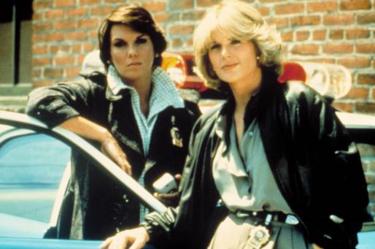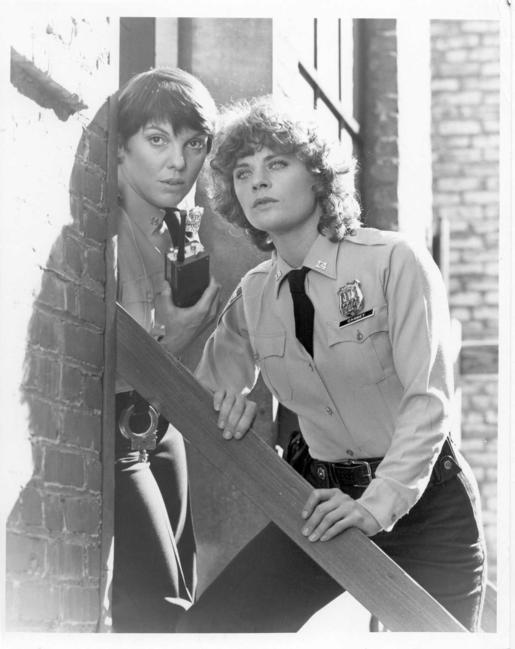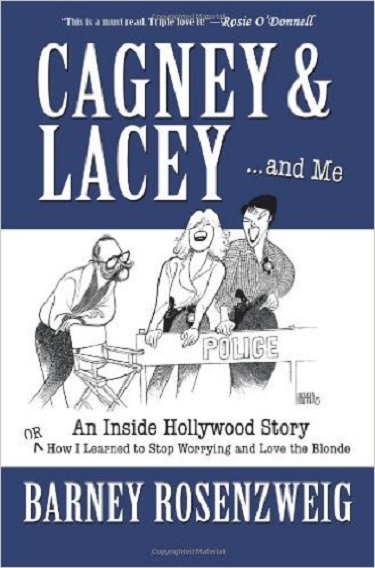Was Meg Foster Replaced as Cagney on Cagney and Lacey Because CBS Executives Felt That She Made the Show Seem Like it Was About a Pair of Lesbians?
Here is the latest in a series of examinations into urban legends about TV and whether they are true or false. Click here to view an archive of the TV urban legends featured so far.
TV URBAN LEGEND: The Cagney from the first season of Cagney and Lacey was replaced because CBS executives felt that the show seemed like it was about a pair of lesbians.
Cagney and Lacey, about two female police detectives who worked as partners, was one of the most acclaimed television dramas of the 1980s, winning the Emmy Award for Best Drama Series twice and winning Best Lead Actress Emmy Awards a remarkable six times in the show’s seven seasons. Producer Barney Rosenzweig used the series to address a number of social issues over the course of the show’s run.

It was definitely a show with a conscience (Rosenzweig has such a conscience he even kept actor Sidney Klute in the opening credits after Klute passed away, as a tribute to the actor). However, it was mainly a show about the interactions between two female friends working together as cops. That interaction, however, proved to be a tricky one for CBS, as the show was actually briefly canceled after one season for a rather gross reason – the idea that the show seemed to be about two lesbians.
Cagney and Lacey began life as a film screenplay by writing team Barbara Avedon and Barbara Corday, produced by Corday’s then-boyfriend (and later husband – they divorced in 1990), Rosenzweig. It did not make it as a film but Rosenzweig was able to re-tool it as a TV series. CBS had a deal with Loretta Swit, one of the stars of their hit sitcom, M*A*S*H*, where she had to do a TV movie for CBS every year. So Cagney and Lacey was done as a TV movie in October 1981, with Swit playing Christine Cagney and Tyne Daly playing Mary Beth Lacey. Rosenzweig really pushed the TV movie as a major feminist achievement, getting the cover of Ms. magazine out of his efforts. The result was a ratings smash. So CBS agreed to make it into a mid-season replacement in 1982. The only problem was that Swit was still locked into her M*A*S*H* contract. It was particularly agonizing for Swit, who knew that M*A*S*H* was on its last legs (the following season would be its last) so she was thrilled with the opportunity to get her own new series, but she was too valuable to M*A*S*H*, so she couldn’t do the show. Rosenzweig cast a young Meg Foster to replace Swit. It is fair to note that the contrast between Swit and Daly was a lot different than the contrast between Foster and Daly. Daly was a bundle of energy and Swit sort of played off of that, while Foster was similar in energy to Daly.

The ratings for the six episodes of Cagney and Lacey that were produced in 1982 were poor. The show aired after Magnum P.I. and it lost a good deal of its lead-in’s rather large audience. So it was cancelled by CBS. Looking at the ratings data further, though, Rosenzweig noted that the show did well with adults, just not with younger audiences. Nowadays, that would just be even more of a death knell for the show, but back then, that was enough for him to convince CBS to move the show to 10:00 PM to see how it did there. And sure enough, the ratings did go up. So CBS was willing to work with Rosenzweig on “un-canceling” the show. However, there was a major obstacle for them – they needed Meg Foster gone.
In a shockingly candid (and also gross) interview with TV Guide at the time, an anonymous CBS executive explained their reasoning, noting that the stars were:
[T]oo tough, too hard and not feminine. They were too harshly women’s lib. The American public doesn’t respond to the bra burners, the fighters, the women who insist on calling manhole covers ‘people-hole covers.’ These women on Cagney & Lacey seemed more intent on fighting the system than doing police work. We perceived them as dykes.
Ouch.
Rosenzweig naturally did not like that, but at the same time, he wanted the show to continue. Luckily for him, another CBS show, House Calls, was also getting canceled, freeing its star, Sharon Gless, up as an option (Gless actually had just replaced Lynn Redgrave on the show in the middle of its just completed third season, which was a major hit for two seasons with Redgrave. However, Redgrave and the show’s producers got into a dispute in Season 3. Redgrave had just had a daughter and wanted to bring her infant to work so that she could breastfeed her. The producers felt that she was just using that as an excuse to wring more money out of them, sort of like when actors call in sick while they’re really holding out for more money). Gless initially was wary about being a replacement yet again, but she relented and she was cast as the new Christine Cagney. Gless’ Cagney was seen as more conventionally “feminine,” and therefore worked better as a contrast to the brash Lacey.
While the reasons behind her casting were uncool, it is fair to say that Gless and Daly’s chemistry was excellent and really stood out for the six seasons they worked together (Gless won two Best Lead Actress Emmys while Daly won four). Amusingly enough, though, the show was canceled again after Gless and Daly’s first season together! This time around, Rosenzweig organized one of the relatively few successful letter-writing campaigns and the publicity led to CBS relenting and bringing the show back. Its ratings improved in Season 3 and was not canceled again until its final and ultimate cancellation after season seven (every year, though, brought cancellation rumors, as the ratings were never exactly great).
Looking back at 1982 from 2015, what seems particularly shocking is not so much that the CBS executive had such beliefs, but that they felt free to share them with a journalist.
EDITED TO ADD: Barney Rosenzweig wrote to me with a couple of points of clarification. First, he wanted to note that no TV executive ever said anything to him directly or indirectly about that perception of the characters. He also noted:
Harvey Shephard, then the top CBS executive on the West Coast, where the show was made, did ask me if I would consider re-casting Meg as a possible stipulation of renewal, pointing out that in his view the two women were both too “street” and too similar. He went on to point out that what I had achieved in casting the original (with Tyne and Loretta Switt) was a better contrast of type and “class.” My offer to dye Meg Foster’s hair was cut short with a look from the Network exec and so I agreed that if that piece of casting had to be changed in order to achieve a pick up for the series then I would cooperate.
He has a lot of other stories on the topic (and obviously a bunch more topics) in his book, Cagney and Lacey and Me, which you can get at Amazon.
I know I’m going to grab a copy. It sounds fascinating. Thanks for the head’s up, Barney!
The legend is…
STATUS: Sadly True
Feel free (heck, I implore you!) to write in with your suggestions for future installments! My e-mail address is bcronin@legendsrevealed.com.
Be sure to check out my Entertainment Urban Legends Revealed for more urban legends about the worlds of TV, Movies and Music!







Rosenzweig was married to Barbara Corday for a time. He divorced her in 1990, and married Sharon Gless in 1991. As far as I know, they’re still married. He couldn’t marry Tyne Daly, as she was at the time married to Georg Stanford Brown.